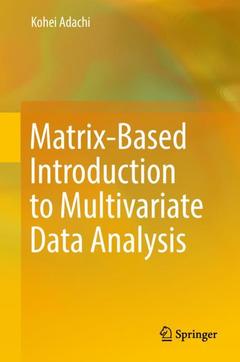Description
Matrix-Based Introduction to Multivariate Data Analysis, Softcover reprint of the original 1st ed. 2016
Author: Adachi Kohei
Language: English
Subjects for Matrix-Based Introduction to Multivariate Data Analysis:
Keywords
Statistics; Multivariate Analysis; Data Analysis; Matrices; Vectors
Approximative price 84.39 €
In Print (Delivery period: 15 days).
Add to cartSupport: Print on demand
Description
/li>Contents
/li>Biography
/li>Comment
/li>
Enables even readers without knowledge of matrices to grasp their operations to learn multivariate data analysis in matrix forms
Emphasizes what model underlies an analysis procedure and what function is optimized for estimating model parameters as the fastest way to understand the procedure
Introduces plain numerical illustrations of the purposes for which procedures are utilized, followed by mathematical descriptions for an intuitive understanding of those purposes
Includes supplementary material: sn.pub/extras
These books may interest you

Methods of Multivariate Analysis 140.84 €



